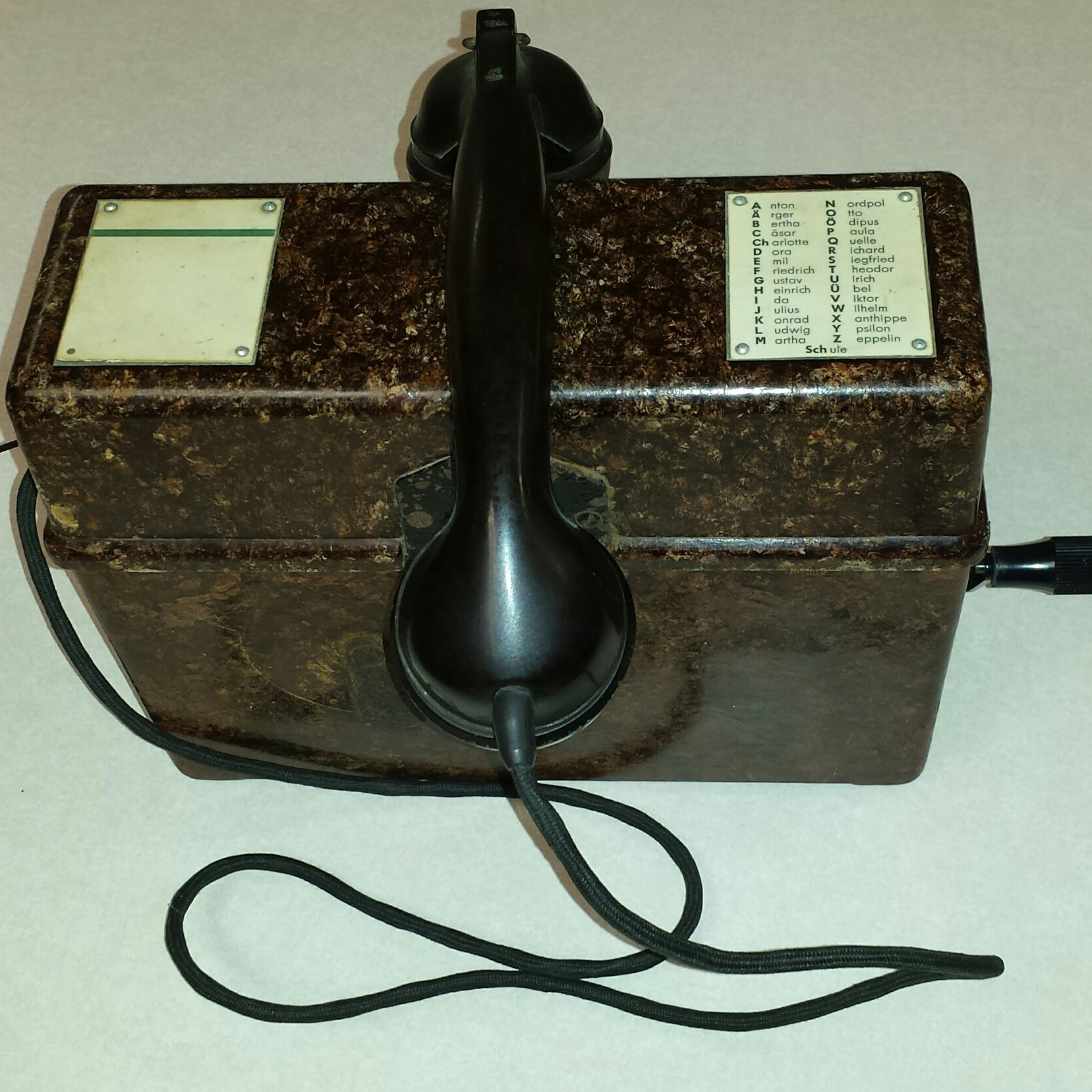The purpose of a crank magneto (Induktor) is to energize the ringer (Wechselstromwecker) on a connected field telephone, or drop the signal flap on a connected switchboard. When the crank (Kurbel) is turned, the magneto rotates an armature (Anker) in a strong permanent magnetic field to produce an alternating electrical voltage and current. In most WW2 German field telephones, the magnetos are painted bright red.


Each magneto has a change-over switch (Umschalter) mounted to the end opposite to the crank. The change-over switch is connected by wires to the La telephone terminal, the ringer, and the test button (Prüftaste). The switch contacts are activated by turning the crank.
At rest, the field telephone’s ringer is connected via contacts e and f on the change-over switch to the La and Lb/E terminals. The phone’s ringer can respond to incoming calls. When the crank is turned, the crankshaft (Vorgelegewelle) moves out. This movement activates the e and g contacts on the change-over switch. The phone’s ringer is disconnected and the magneto is the connected to the La and Lb/E terminals. Alternating current is then sent to signal a connected device.

At some point, the design of the magnetos was changed to eliminate contacts a and b, and replace them with slip rings on the end of the armature. These slip rings are shown below.

Two spring-loaded contacts ride on the slip rings to provide an output from the armature coil to the change-over switch. These contacts are shown in the photographs below.



For more information about magnetos and field telephones, check out my book… https://www.lulu.com/en/us/shop/rotwang-manteuffel/world-war-2-german-field-telephone-equipment-a-basic-guide-for-reenactors-and-historians/paperback/product-976w9q.html?page=1&pageSize=4

